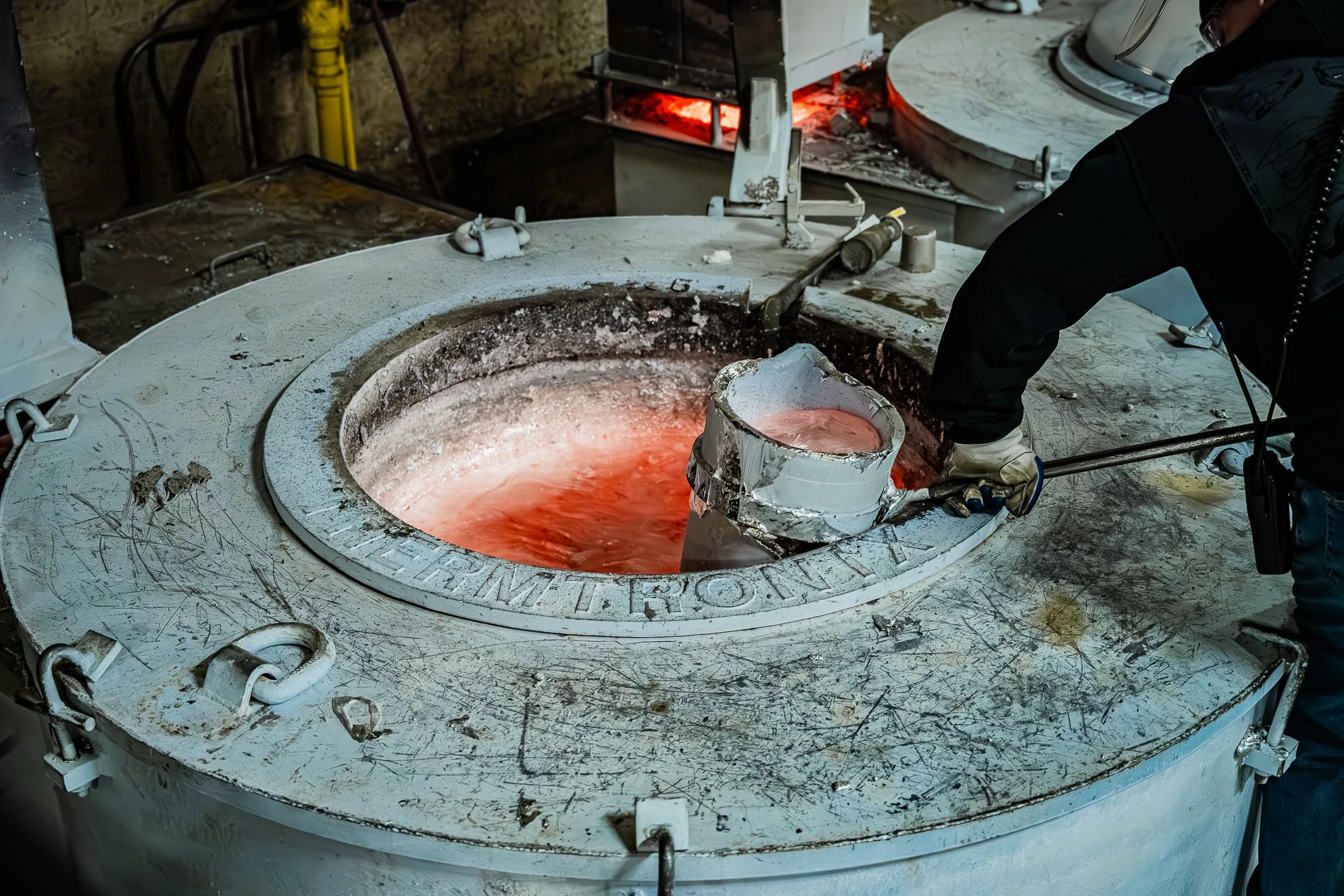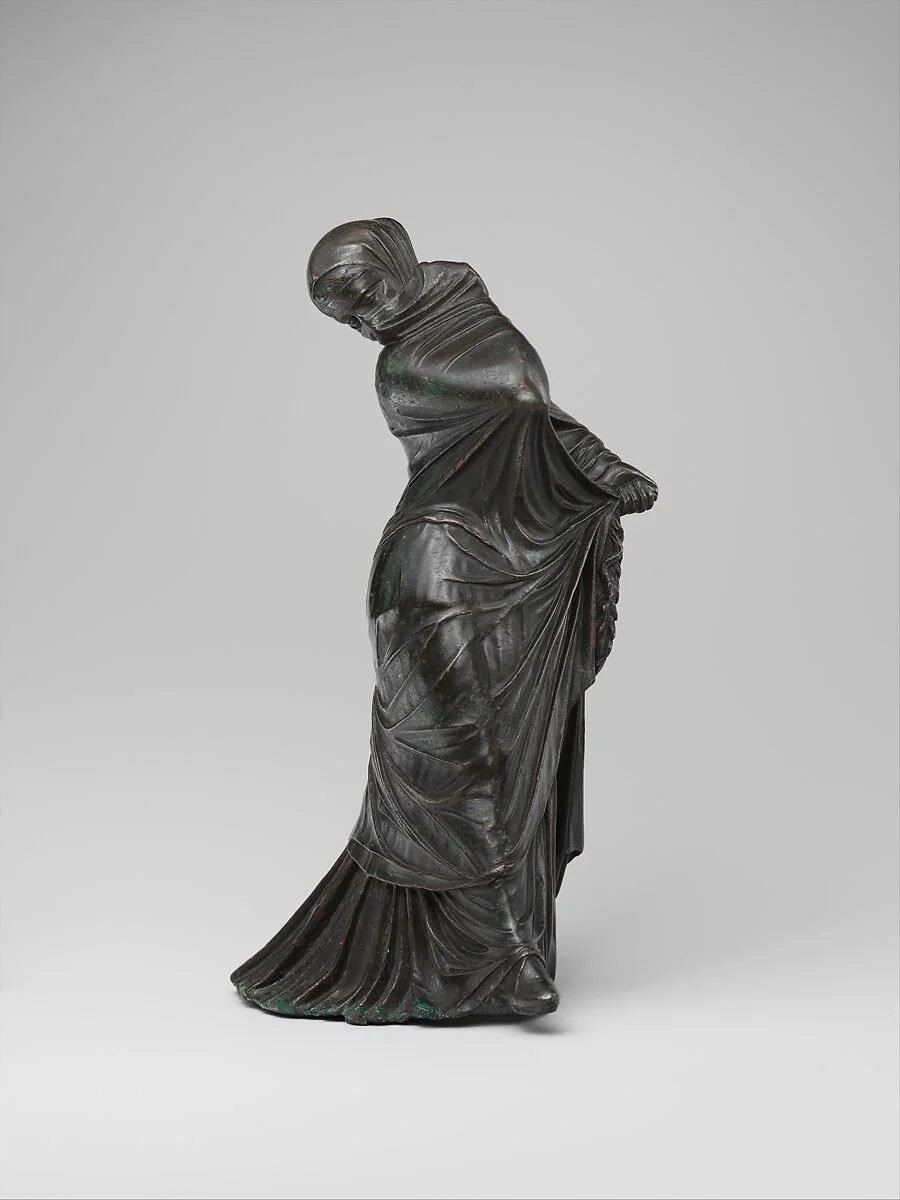What Is Metal Casting?

Metal Casting In Laymen’s Terms
Above: A skilled tradesman preparing an airset sand mold for casting.
Below: Molten metal is poured into the empty cavity of the sand mold.
Metal casting is a manufacturing process that involves pouring molten metal into a shaped cavity, where it is left to cool and solidify.
After a metal casting has cooled solid, it is typically physically modified through post-processing techniques that enhance its usability for a specific task or improve its appearance.
Common Types of Metal Casting
Die-casting
Investment Casting
Centrifugal Casting
Permanent Mold Casting
Sand Casting.
In modern times, metal castings play a vital part in everyday life. We find castings in automotive products, cookware, outdoor items, and there are even large castings produced at WAF that can be found orbiting the Earth as satellite components.
Take a look around; I would bet there is a metal casting within your field of view. You might even be wearing one as a piece of jewelry!
There is so much to appreciate about the process of metal casting!
Metal Casting Is Ancient
Above: Egyptian depiction of copper casting.
Below: 3 bronze castings from across the world.
Benin, Greek, and Han Chinese.
Metal casting is old….. Like, really, really old.
It’s a process that dates back thousands of years, with the earliest known castings found in the timeline of the Copper Age. Two interesting examples of early copper castings are:
Ötzi the Iceman’s axe head is a high-purity copper casting that was cold-worked and sharpened. 3300 BC
Another old copper casting found roughly around the same period was located in Mesopotamia, also known as the cradle of civilization.
It was a copper frog dating to around 3200 BC (5225 years ago), with frogs representing life and fertility in Mesopotamia.
As humankind began to settle and develop permanent agriculture, the need for metal tools/weapons flourished, and thus, trade for metal ore became more critical. Trips to Anatolia (modern-day Turkey) and the area of Afghanistan for copper and tin became more frequent for the ancient people of Mesopotamia (modern-day Iraq).
Over time, ancient people learned that stronger alloys could be created by mixing copper and tin when smelting, thus beginning the Bronze Age.
But it’s not only the Mesopotamian cultures that fell in love with metal casting. Multiple civilizations and cultures across the globe, spanning various time periods, have also recognized the utility and beauty of metal castings and employed the process to create a range of items, including weapons and tools, musical instruments, cooking utensils, mirrors, jewelry, and sculptures.
Once the secret was out, metal casting technology began to crawl across the globe to China, India, Europe, and Africa.
Metal casting helped early humans build into advanced societies, and it is not a stretch to assume that without metal casting, we would have nothing close to the world we take for granted today.
We owe A LOT to metal casting!






